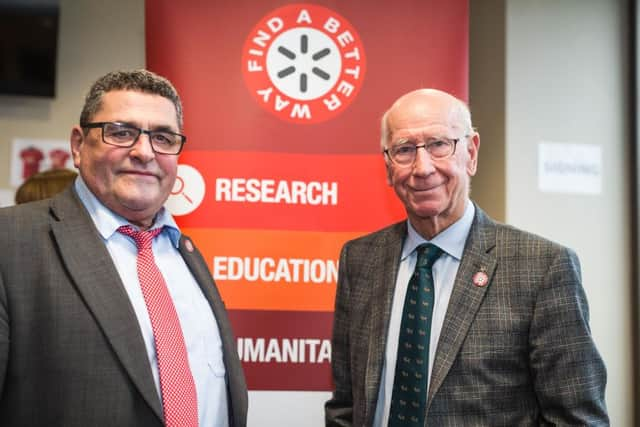Pioneering synthetic bone project will help landmine victims


An estimated 4,300 people are injured or killed by landmine blasts every year, with the number of casualties caused by the weapons reaching a 10-year high in 2015.
It is hoped easily assembled bespoke synthetic bones, created by 3D printing, will improve the quality of life of victims by aiding their recovery.
Advertisement
Hide AdAdvertisement
Hide AdThe major research project will be funded by the Cheshire-based charity Find A Better Way in a deal signed off this morning.


The organisation was established in 2011 by football legend Sir Bobby Charlton following a visit to Cambodia, where landmines remain a serious threat to the population following decades of war.
The Glasgow team use a 3D printer to create bone scaffolds, which are then coated with nanolayers of a growth factor known as BMP-2 and stem cells.
They are then placed into a specially designed machine known as a Nanokick - invented by deputy project leader Professor Matt Dalby - which shakes the bone scaffold 15 nanometers across, 1,000 times per second.
This further stimulates the stem cells and growth factor to interact and start growing bone tissue on the scaffold at an accelerated rate.


When completed, it will be possible within 3-4 days to create bespoke bone pieces to fit the needs of individual patients.
Once implanted in the body, bone tissue will continue to grow, replacing the scaffold, which eventually dissolves leaving only new bone behind.
Find A Better Way CEO Lou McGrath said: “It is hard to overestimate what an important breakthrough this could be for landmine blast survivors.
Advertisement
Hide AdAdvertisement
Hide Ad“Advances in reconstructive surgical techniques now encourage trauma surgeons to retain as much of a limb as possible instead of quickly amputating above the knee.
“In many cases, the amount of bone that can be recovered is a limiting factor in how much of a leg or arm can be salvaged. With the developments from this project, we could reach a situation where it is only the limitations of surgical techniques, not the amount of viable tissue remaining, that determines the outcome.”
The Glasgow team will also be developing small blocks of ‘off the shelf’ synthetic bone that can be shipped to anywhere in the world for a local surgeon to cut and shape to a patient’s need.
This product will be created using the same process, but using shapes and sizes that are likely to fit common blast injury needs. Specially designed packaging is being developed that will keep the bone tissue
viable for two to three weeks depending on local conditions.
Although the project will initially concentrate on smaller pieces of bone, there is no theoretical limit to how much synthetic bone can grafted into a blast injury survivor.
If successful the new technology will vastly extend the available options for blast injury surgeons, making it easier to reconstruct limbs or repair skull injuries.
The project will begin work in January and is projected to conduct a ‘first man’ study within five years.
Advertisement
Hide AdAdvertisement
Hide AdProject lead Professor Manuel Salmeron-Sanchez said: “We have been developing various types of bone-related technology at the University of Glasgow for the previous five years.
“With our interdisciplinary team of bioengineers, biologists and surgeons and the financial support of Find a Better Way we expect efficient progress towards the generation of bone, and we look forward to landmine blast survivors of the future having and improved quality of life.”